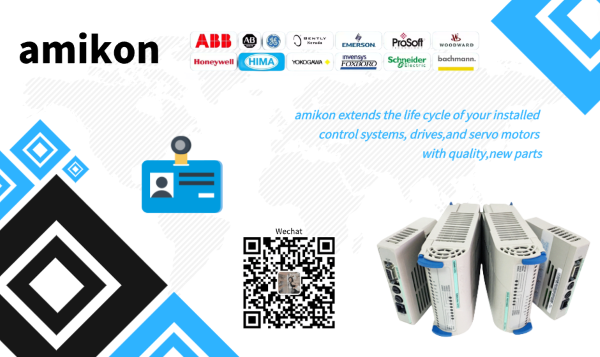Aug

Programmable Logic Controllers (PLCs) have become essential components in modern industrial automation, enabling precise control over complex processes. However, the true potential of PLCs is unlocked through effective networking and communication, which facilitate seamless data exchange between various devices and systems. This blog explores the communication protocols and network technologies used in PLC systems, highlighting how they contribute to efficient and reliable operations.
Communication protocols are standardized sets of rules that define how data is transmitted and received between devices. In PLC systems, several protocols are widely used to ensure interoperability and effective communication. Some of the most common protocols include:
Modbus is one of the oldest and most widely used communication protocols in industrial automation. Developed in 1979 by Modicon (now Schneider Electric), Modbus is a serial communication protocol that allows multiple devices to communicate over a single network. It supports two types of communication: Modbus RTU (Remote Terminal Unit) for serial communication and Modbus TCP/IP for Ethernet-based communication. Modbus is known for its simplicity, reliability, and ease of implementation, making it a popular choice for many PLC applications.
Profibus (Process Field Bus) is another widely used communication protocol in industrial automation. Developed by Siemens, Profibus supports two main variants: Profibus DP (Decentralized Peripherals) for high-speed communication with sensors and actuators, and Profibus PA (Process Automation) for communication in hazardous environments. Profibus operates on a master-slave architecture, where a master device controls the communication flow, ensuring timely and efficient data exchange between devices.
EtherNet/IP (Ethernet Industrial Protocol) is an industrial communication protocol that uses standard Ethernet technology for real-time data exchange between devices. Developed by Rockwell Automation, EtherNet/IP leverages the widespread availability and high-speed capabilities of Ethernet networks to provide robust and scalable communication solutions for PLC systems. It supports both implicit and explicit messaging, allowing for flexible and efficient data transfer in various industrial applications.
In addition to communication protocols, network technologies play a crucial role in enabling efficient data exchange in PLC systems. These technologies provide the infrastructure for connecting multiple devices and facilitating seamless communication. Some of the key network technologies used in PLC systems include:
Ethernet is a ubiquitous networking technology that forms the backbone of many industrial communication systems. It provides high-speed, reliable, and scalable communication solutions for PLC networks. Ethernet-based networks support various topologies, including star, ring, and bus, allowing for flexible and efficient network designs. The widespread adoption of Ethernet technology in industrial automation has led to the development of numerous Ethernet-based communication protocols, such as EtherNet/IP and Modbus TCP/IP, further enhancing the capabilities of PLC systems.
Fieldbus is a group of industrial network protocols specifically designed for real-time distributed control in automation systems. Unlike Ethernet, which is a general-purpose networking technology, Fieldbus protocols are optimized for industrial applications, providing deterministic communication and precise control over devices. Some of the widely used Fieldbus protocols include Profibus, DeviceNet, and CANopen. Fieldbus networks are known for their robustness, reliability, and ability to handle complex control tasks in harsh industrial environments.
Wireless communication technologies are becoming increasingly popular in industrial automation due to their flexibility and ease of deployment. Wireless networks eliminate the need for physical cabling, reducing installation costs and enabling communication in hard-to-reach areas. Several wireless communication technologies, such as Wi-Fi, Zigbee, and Bluetooth, are used in PLC systems to facilitate data exchange between devices. While wireless communication offers numerous benefits, it also presents challenges such as signal interference and security concerns, which need to be addressed for reliable operation.
· Scalability: PLC networks can easily scale to accommodate additional devices and expand system capabilities.
· Flexibility: Various communication protocols and network technologies allow for flexible and customizable solutions.
· Interoperability: Standardized protocols ensure seamless communication between devices from different manufacturers.
· Complexity: Implementing and managing PLC networks can be complex, requiring specialized knowledge and expertise.
· Security: Ensuring the security of PLC networks is critical to prevent unauthorized access and data breaches.
· Reliability: Maintaining reliable communication in harsh industrial environments can be challenging due to factors like electromagnetic interference and physical obstructions.
Effective networking and communication are essential for unlocking the full potential of PLC systems in industrial automation. By leveraging standardized communication protocols and robust network technologies, PLC systems can achieve efficient and reliable data exchange, enabling precise control and monitoring of complex processes. Understanding the various protocols and technologies available allows for informed decision-making and the implementation of optimal communication solutions in PLC networks.
|
Communication Protocol |
Description |
Key Features |
|
Modbus |
A serial communication protocol widely used in industrial automation. |
Simplicity, reliability, ease of implementation |
|
Profibus |
A protocol developed by Siemens for high-speed communication in industrial environments. |
Master-slave architecture, robust and reliable |
|
EtherNet/IP |
An industrial protocol using Ethernet technology for real-time data exchange. |
High-speed, scalable, flexible messaging |
By understanding these protocols and technologies, industrial professionals can design and implement effective PLC networks that enhance automation efficiency and productivity.